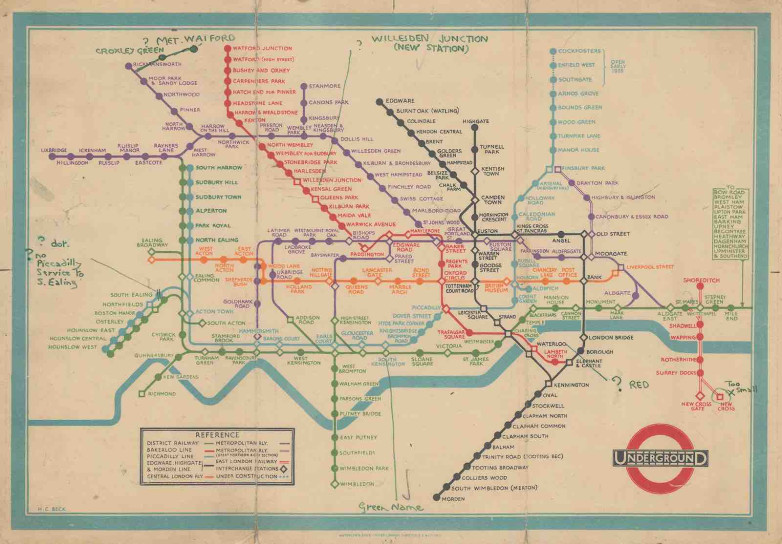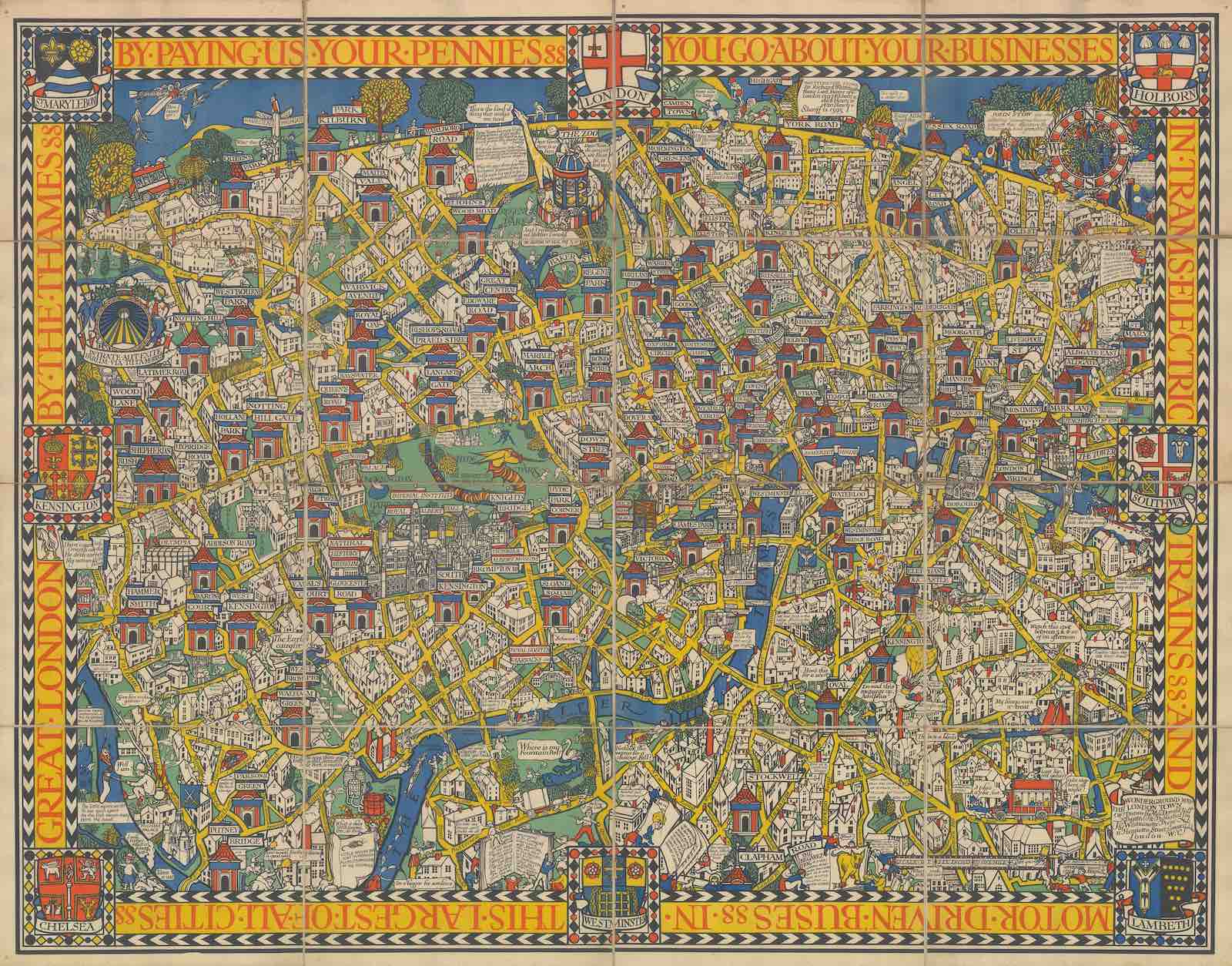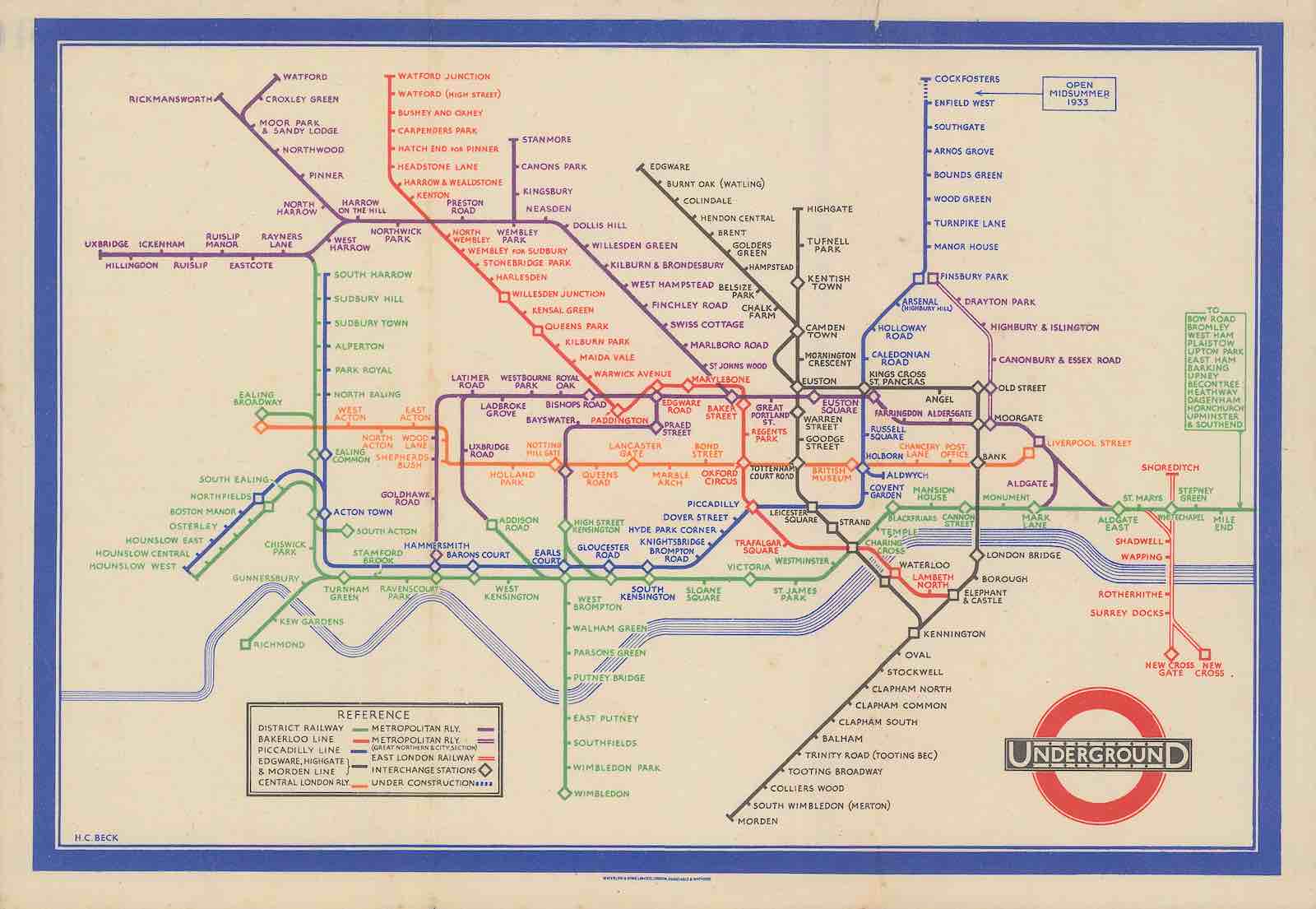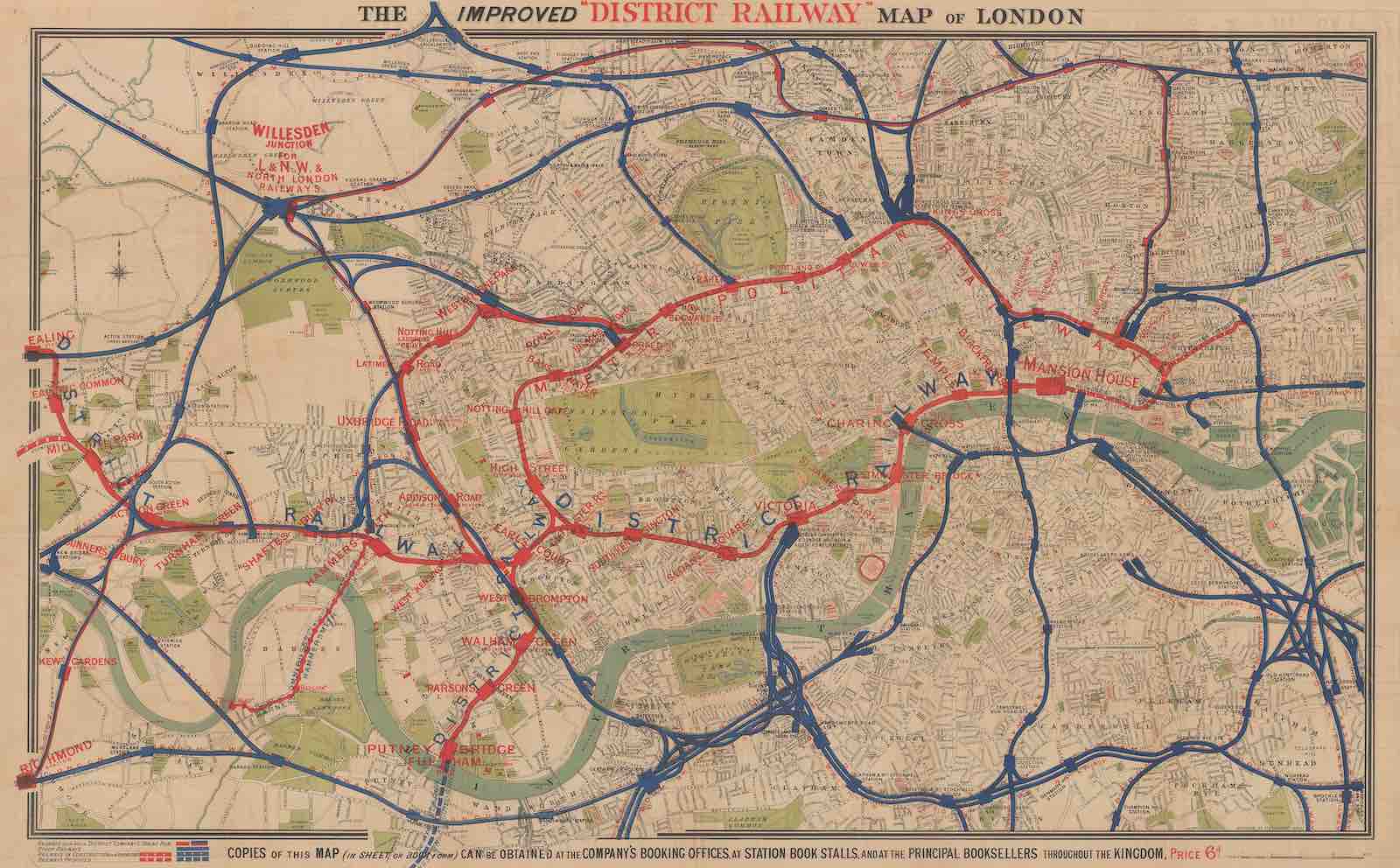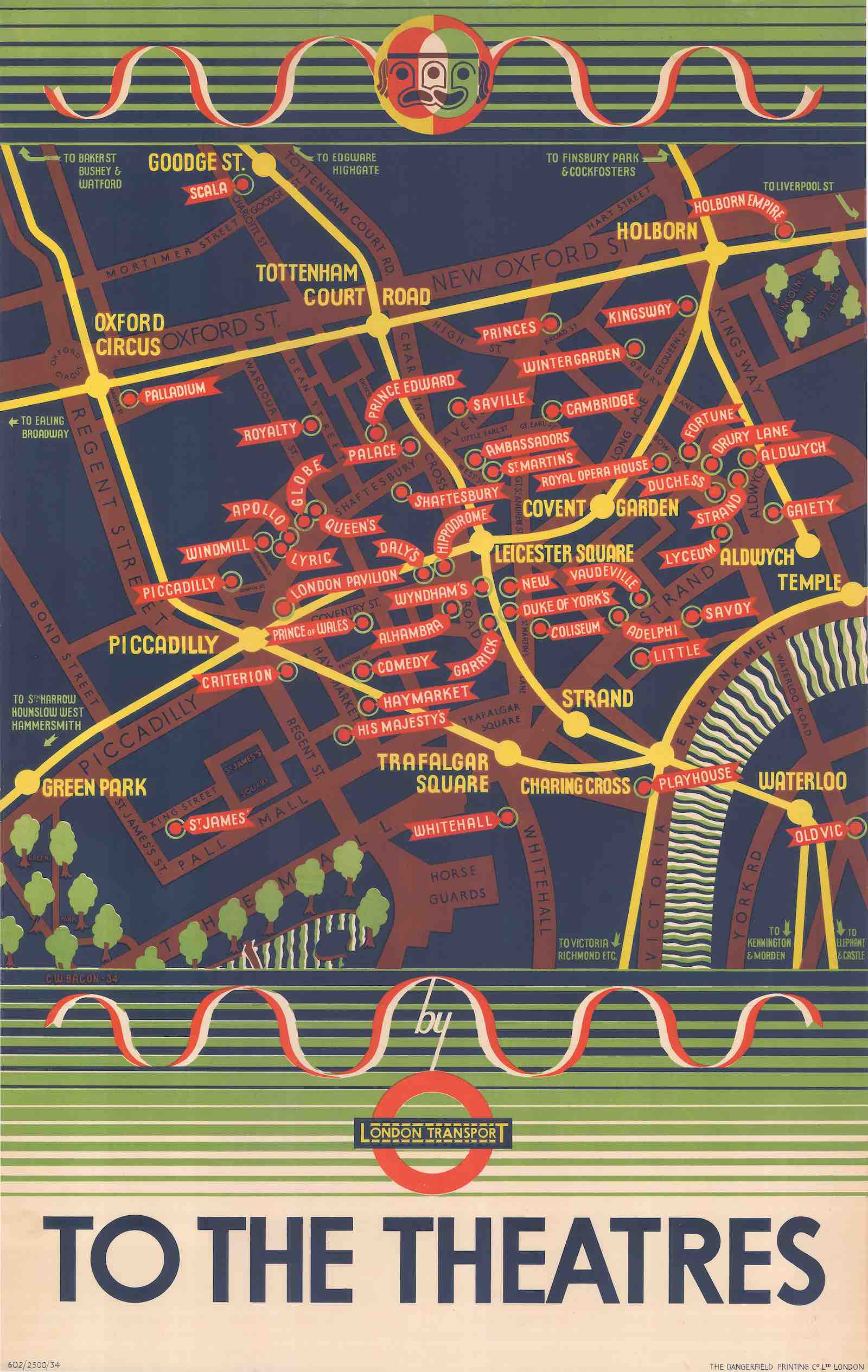The Metropolitan Railway opened the world's first underground passenger railway in London in January 1863 to create a route for the developing commuting population. By the end of 1863, several of London’s leading cartographers, sensing a commercial opportunity, published detailed folding maps illustrating the railway proposals before the House of Lords Select Committee. On display will be James Wyld’s New Map of London (1863), signalling the advent of the London Underground network, alongside The Improved District Railway Map of London (1880), one of the earliest Underground maps issued to the public.
In the early 20th century, the London Underground was unpopular and losing money due to complaints of overcrowding, uncleanliness, and tardiness. Frank Pick, the Underground’s Publicity Manager, commissioned great artists of the day to create works that encouraged Londoners to associate the Underground with access to leisure activities. Examples featured in the exhibition include To the Theatres (1934), a striking poster advertising travel to the West End by Cecil Walter Bacon, and the Wonderground Map of London (1914) by Macdonald Gill, a whimsical caricature map of London, so popular with the public that it is often credited with saving the Underground from bankruptcy. The Wonderground Map that will be exhibited at The Map House is the larger, rarer edition created to hang in stations rather than to be purchased as a souvenir.
Mapping the Tube will also explore the extraordinary life and work of Harry Beck, the designer of the 1933 London Underground map, for which he was paid just £5 and five shillings. Beck, a trained engineer, conceived the design whilst drawing an electrical circuit diagram, revolutionising the way transport maps were designed by not placing the stations geographically as previous maps had.
He believed that Underground passengers were not concerned with geographical accuracy but were more interested in how to get from one station to another and where to change trains. Beck’s clear, accessible and aesthetic design was so successful that it became the template for transport maps worldwide, such as the Sydney Suburban and City Underground Railway Map (1939), which directly copied the London Underground’s branding.
Despite the map’s overwhelming success, Beck’s contribution was largely forgotten until 2001, 27 years after his death, when the following acknowledgement was added to the map - “This diagram is an evolution of the original design conceived in 1931 by Harry Beck”. You can still read this in the bottom left corner of all London Tube maps today.
Visitors to the exhibition can see an example of the Tube Map from every year from 1933 to 2023, charting its complete evolution from Beck’s globally influential and groundbreaking work.

